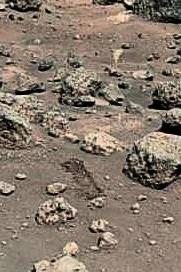Exploring Mars
Astronomers have been studying Mars for thousands of years, it being one of the 5 planets known since ancient times. First, Galileo in the 1600s, then Christian Huygens, began careful study of Mars through early telescopes. But Percival Lowell, around 1900, is responsible for making the common person take note of Mars.
Lowell spent 15 years intensively studying Mars. By viewing the surface of Mars through the 24-inch Clark Telescope, Lowell produced intricate drawings of the Red Planet, delineating hundreds of straight lines and their intersections. Lowell believed the canals were filled with water for global irrigation plans, constructed by intelligent beings who once flourished on Mars. He published his views in three books: Mars(1895), Mars and Its Canals(1906), and Mars As the Abode of Life(1908).
Because of these publications and enormous press he and his work received, 100 years ago, most people assumed life existed on Mars! However, even today, outside of the Earth, Mars appears to be the most likely place for life in the Solar System. In fact, it can almost certainly be assumed that material from Earth has made it to Mars, thereby `infecting' it.
Space Exploration of Mars
NASA has sent 14 missions to Mars (not all successful!).
The USSR has sent 16 (with an even lower success rate).
 There are basically three levels to exploration: Flybys which simply flew
by Mars; Orbiters putting space craft in orbit around Mars; and
Landers & Rovers where an instrument is set on the surface, and may or
may not rove from the landing site. Successful flybys
occurred in the 1960s, and successful orbiters and landers began in the 1970s.
The 1990s produced the first rover missions (Photo of Pathfinder, 1997)
There are basically three levels to exploration: Flybys which simply flew
by Mars; Orbiters putting space craft in orbit around Mars; and
Landers & Rovers where an instrument is set on the surface, and may or
may not rove from the landing site. Successful flybys
occurred in the 1960s, and successful orbiters and landers began in the 1970s.
The 1990s produced the first rover missions (Photo of Pathfinder, 1997)
 What have we found out?
What have we found out?
The original Viking Missions of the 1970s, squelched at illusions of
life on Mars! There were two missions, Viking 1 and Viking 2, leaving
Cape Canaveral, FL on August and September, in 1975. Each consisted of
an orbiter and a lander. The landers had four experiments designed to
test for life. Three showed possible positive results. But
the fourth unequivocally proved no life at the surface.
All is not lost! Investigations in the last decade, carried out by scientific instruments on landers, orbiters and rovers suggest that Mars was at one time in its past warmer and wetter, with water existing in its liquid state and a thicker atmosphere. Maybe life did once exist there? Maybe it's gone underground?

